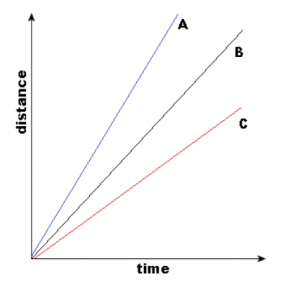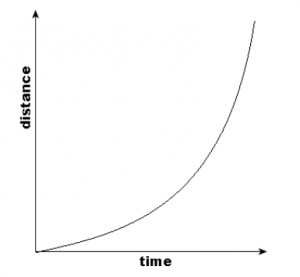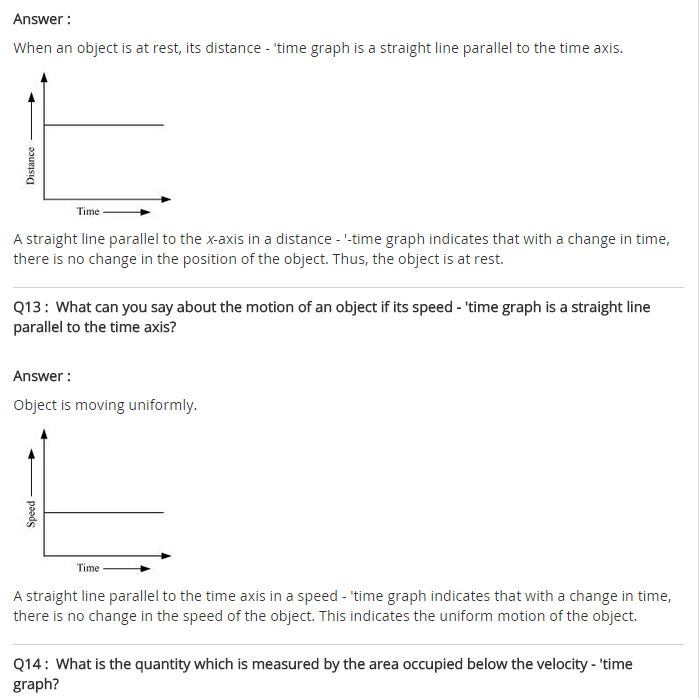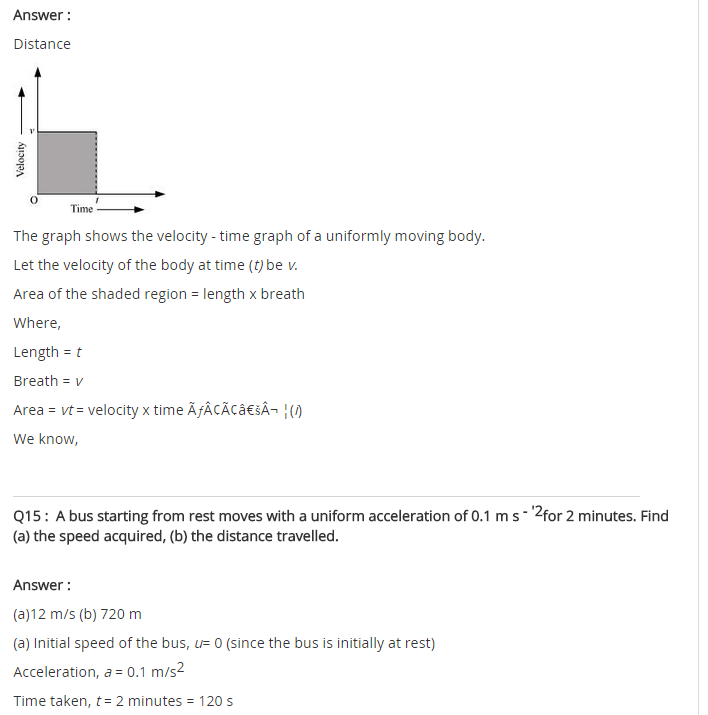1. A farmer moves along the boundary of a square field of side 10m in 40 s. What will be the magnitude of displacement of the farmer at the end of 2 minutes 20 seconds from his initial position?
Solution
Given that the farmer covers the entire boundary of the square field in 40 seconds, the total distance traveled by the farmer in 40 seconds is 4*(10) = 40 meters.
Therefore, the average distance covered by the farmer in one second is: 40m/40 = 1m
Two minutes and 20 seconds can be written as 140 seconds. The total distance traveled by the farmer in this timeframe is: 1 m * 140 = 140m
Since the farmer is moving along the boundary of the square field, the total number of laps completed by the farmer will be: 140m/40 = 3.5 laps
Now, the total displacement of the farmer depends on the initial position. If the initial position of the farmer is at one corner of the field, the terminal position would be at the opposite corner (since the field is square).
In this case, the total displacement of the farmer will be equal to the length of the diagonal line across the opposite corners of the square.
Applying the Pythagoras theorem, the length of the diagonal can be obtained as follows: √(102+102)= √200= 14.14m.
This is the maximum possible displacement of the farmer.
If the initial position of the farmer is at the mid-point between two adjacent corners of the square, the net displacement of the farmer would be equal to the side of the square, which is 10m. This is the minimum displacement.
If the farmer starts at a random point around the perimeter of the square, his net displacement after traveling 140m will lie between 10m and 14.14m.
2. Which of the following is true for displacement? (a) It cannot be zero. (b) Its magnitude is greater than the distance travelled by the object.
Solution
Neither of the statements are true. Statement (a) is false because the displacement of an object which travels a certain distance and comes back to its initial position is zero. Statement (b) is false because the displacement of an object can be equal to, but never greater than the distance traveled.
Intext Questions – 2 Page: 102
3. Distinguish between speed and velocity.
Solution
| Difference Between Speed and Velocity | |
| Velocity | Speed |
| It refers to the displacement of a given object over a time interval. | It refers to the distance moved by an object over a time interval. |
| It has a specific direction | It does not have any direction. |
| Velocity = displacement/time | Speed = distance / time |
| Velocity can hold a negative value | Speed cannot hold a negative value. |
4. Under what condition(s) is the magnitude of average velocity of an object equal to its average speed?
Solution
Since average speed is the total distance traveled in a time frame and velocity is the total displacement in the time frame, the magnitude of average velocity and average speed will be the same when the total distance traveled is equal to the displacement.
5. What does the odometer of an automobile measure?
Solution
The odometer measures the total distance traveled by the automobile.
6. What does the path of an object look like when it is in uniform motion?
Solution
The path of an object in uniform motion is a straight line.
7. During an experiment, a signal from a spaceship reached the ground station in five minutes. What was the distance of the spaceship from the ground station? The signal travels at the speed of light, that is, 3 × 108 m/s.
Solution
Given that the signal travels in a straight line, the distance between the spaceship and the ground station is equal to the total distance traveled by the signal.
5 minutes = 5*60 seconds = 300 seconds.
Speed of the signal = 3 × 108 m/s.
Therefore, total distance = (3 × 108 m/s) * 300s
= 9*1010 meters.
Intext Questions – 3 Page: 103
8. When will you say a body is in (i) uniform acceleration? (ii) non-uniform acceleration?
Solution
Uniform Acceleration: In this type of acceleration, the body moves along a straight line and its velocity increases/decreases at a uniform rate (it changes at a constant rate in any constant time interval).
Non-Uniform Acceleration: In this type of acceleration, the body moves along a straight line and its velocity increases/decreases at a rate that is not uniform (it changes at a different rate for a given constant time interval).
9. A bus decreases its speed from 80 km h–1 to 60 km h–1 in 5 s. Find the acceleration of the bus.
Solution
Given, the initial velocity (u) = 80km/hour = 80000m/3600s= 22.22 m.s-1
The final velocity (v) = 60km/hour = 60000m/3600s= 16.66 m.s-1
Time frame, t = 5 seconds.
Therefore, acceleration (a) =(v-u)/t = (16.66 m.s-1 – 22.22 m.s-1)/5s
= -1.112 m.s-2
Therefore, the total acceleration of the bus is -1.112m.s-2. It can be noted that the negative sign indicates that the velocity of the bus is decreasing.
10. A train starting from a railway station and moving with uniform acceleration attains a speed 40 km h–1 in 10 minutes. Find its acceleration.
Solution
Given, the initial velocity (u) of the train = 0m.s-1 (at rest)
Terminal velocity (v) of the train = 40km/hour = 11.11 m.s-1
Time interval, t = 10 minutes = 600 s.
The acceleration of the train is given by =(v-u)/t = (11.11 m.s-1 – 0 m.s-1)/600s = 0.0185 m.s-2
Intext Questions – 4 Page: 107
11. What is the nature of the distance-time graphs for uniform and non-uniform motion of an object?
Solution
For uniform motion, the distance-time graph is a straight line. On the other hand, the distance-time graph of an object in non-uniform motion is a curve.


12. What can you say about the motion of an object whose distance-time graph is a straight line parallel to the time axis?



A trolley, while going down an inclined plane, has an acceleration of 2 cm s-2. What will be its velocity 3 s after the start?
Solution
Given, initial velocity (u) = 0 (the trolley begins from the rest position)
Acceleration (a) = 0.02 ms-2
Time (t) = 3s
As per the first motion equation, v=u+at
Therefore, terminal velocity of the trolley (v) = 0 + (0.02 ms-2)(3s)= 0.06 ms-2
Therefore, the velocity of the trolley after 3 seconds will be 6 cm.s-2
4. A racing car has a uniform acceleration of 4 m s-2. What distance will it cover in 10 s after start?
Solution
Given, the car is initially at rest; initial velocity (u) = 0 ms-1
Acceleration (a) = 4 ms-2
Time period (t) = 10 s
As per the second motion equation, s = ut+1/2 at2
Therefore, the total distance covered by the car (s) = 0 * 10m + 1/2 (4ms-2)(10s)2
= 200 meters
Therefore, the car will cover a distance of 200 meters after 10 seconds.
5. A stone is thrown in a vertically upward direction with a velocity of 5 m s-1. If the acceleration of the stone during its motion is 10 m s–2 in the downward direction, what will be the height attained by the stone and how much time will it take to reach there?
Solution
Given, initial velocity (u) = 5 m/s
Terminal velocity (v) = 0 m/s (since the stone will reach a position of rest at the point of maximum height)
Acceleration = 10 ms-2 in the direction opposite to the trajectory of the stone = -10 ms-2
As per the third motion equation, v2 – u2 = 2as
Therefore, the distance traveled by the stone (s) = (02 – 52)/ 2(10)
Distance (s) = 1.25 meters
As per the first motion equation, v = u + at
Therefore, time taken by the stone to reach a position of rest (maximum height) = (v – u) /a
=(0-5)/-10 s
Time taken = 0.5 seconds
Therefore, the stone reaches a maximum height of 1.25 meters in a timeframe of 0.5 seconds.
Exercises Page: 112,113
1. An athlete completes one round of a circular track of diameter 200 m in 40 s. What will be the distance covered and the displacement at the end of 2 minutes 20 s?
Solution
Given, diameter of the track (d) = 200m
Therefore, circumference of the track (π*d) = 200π meters.
Distance covered in 40 seconds = 200π meters
Distance covered in 1 second = 200π/40
Distance covered in 2minutes and 20 seconds (140 seconds) = 140 * 200π/40 meters
= (140*200*22)/(40* 7) meters = 2200 meters
Number of laps completed by the athlete in 140 seconds = 140/40 = 3.5
Therefore, the final position of the athlete (with respect to the initial position) is at the opposite end of the circular track. Therefore, the net displacement will be equal to the diameter of the track, which is 200m.
Therefore, the net distance covered by the athlete is 2200 meters and the total displacement of the athlete is 200m.
2. Joseph jogs from one end A to the other end B of a straight 300 m road in 2 minutes 30 seconds and then turns around and jogs 100 m back to point C in another 1 minute. What are Joseph’s average speeds and velocities in jogging (a) from A to B and (b) from A to C?
Solution
Given, distance covered from point A to point B = 300 meters
Distance covered from point A to point C = 300m + 100m = 400 meters
Time taken to travel from point A to point B = 2 minutes and 30 seconds = 150 seconds
Time taken to travel from point A to point C = 2 min 30 secs + 1 min = 210 seconds
Displacement from A to B = 300 meters
Displacement from A to C = 300m – 100m = 200 meters
Average speed = total distance travelled/ total time taken
Average velocity = total displacement/ total time taken
Therefore, the average speed while traveling from A to B = 300/150 ms-1 = 2 m/s
Average speed while traveling from A to C = 400/210 ms-1= 1.9 m/s
Average velocity while traveling from A to B =300/150 ms-1= 2 m/s
Average velocity while traveling from A to C =200/210 ms-1= 0.95 m/s
3. Abdul, while driving to school, computes the average speed for his trip to be 20 km.h–1. On his return trip along the same route, there is less traffic and the average speed is 30 km.h–1. What is the average speed for Abdul’s trip?
Solution
Distance traveled to reach the school = distance traveled to reach home = d (say)
Time taken to reach school = t1
Time taken to reach home = t2
therefore, average speed while going to school = total distance travelled/ total time taken = d/t1 = 20 kmph
Average speed while going home = total distance travelled/ total time taken = d/t2= 30 kmph
Therefore, t1 = d/20 and t2 = d/30
Now, the average speed for the entire trip is given by total distance travelled/ total time taken
= (d+d)/(t1+t2)kmph = (d+d)/(d/20+d/30)kmph
= 120/5 kmh-1 = 24 kmh-1
Therefore, Abduls average speed for the entire trip is 24 kilometers per hour.
4. A motorboat starting from rest on a lake accelerates in a straight line at a constant rate of 3.0 m s–2 for 8.0 s. How far does the boat travel during this time?
Solution
Given, initial velocity of the boat = 0 m/s
Acceleration of the boat = 3 ms-2
Time period = 8s
As per the second motion equation, s = ut + 1/2 at2
Therefore, the total distance traveled by boat in 8 seconds = 0 + 1/2 (3)(8)2
= 96 meters
Therefore, the motorboat travels a distance of 96 meters in a time frame of 8 seconds.
5. A driver of a car travelling at 52 km h–1 applies the brakes and accelerates uniformly in the opposite direction. The car stops in 5 s. Another driver going at 3 km h–1 in another car applies his brakes slowly and stops in 10 s. On the same graph paper, plot the speed versus time graphs for the two cars. Which of the two cars travelled farther after the brakes were applied?
Solution
The total displacement of each car can be obtained by calculating the area beneath the speed-time graph.
Therefore, displacement of the first car = area of triangle AOB
= (1/2)*(OB)*(OA)
But OB = 5 seconds and OA = 52 km.h-1 = 14.44 m/s
Therefore, the area of the triangle AOB is given by: (1/2)*(5s)*(14.44ms-1) = 36 meters
Now, the displacement of the second car is given by the area of the triangle COD
= (1/2)*(OD)*(OC)
But OC = 10 seconds and OC = 3km.h-1 = 0.83 m/s
Therefore, area of triangle COD = (1/2)*(10s)*(0.83ms-1) = 4.15 meters
Therefore, the first car is displaced by 36 meters whereas the second car is displaced by 4.15 meters. Therefore, the first car (which was traveling at 52 kmph) traveled farther post the application of brakes.
6. Fig 8.11 shows the distance-time graph of three objects A,B and C. Study the graph and answer the following questions:
(a) Which of the three is travelling the fastest? (b) Are all three ever at the same point on the road? (c) How far has C travelled when B passes A? (d) How far has B travelled by the time it passes C?
Solution
(a) since the slope of line B is the greatest, B is traveling at the fastest speed.
(b) since the three lines do not intersect at a single point, the three objects never meet at the same point on the road.
(c) since there are 7 unit areas of the graph between 0 and 4 on the Y axis, 1 graph unit equals 4/7 km.
Since the initial point of object C is 4 graph units away from the origin, Its initial distance from the origin is 4*(4/7)km = 16/7 km
When A passes B, the distance between the origin and C is 8km
Therefore, total distance traveled by C in this time = 8 – (16/7) km = 5.71 km
(d) the distance that object B has covered at the point where it passes C is equal to 9 graph units.
Therefore, total distance traveled by B when it crosses C = 9*(4/7) = 5.14 km
7. A ball is gently dropped from a height of 20 m. If its velocity increases uniformly at the rate of 10 m s-2, with what velocity will it strike the ground? After what time will it strike the ground?
Solution
Given, initial velocity of the ball (u) = 0 (since it began at the rest position)
Distance traveled by the ball (s) = 20m
Acceleration (a) = 10 ms-2
As per the third motion equation,
Therefore,
= 2*(10ms-2)*(20m) + 0
v2 = 400m2s-2
Therefore, v= 20ms-1
The ball hits the ground with a velocity of 20 meters per second.
As per the first motion equation,
Therefore, t = (v-u)/a
= (20-0)ms-1 / 10ms-2
= 2 seconds
Therefore, the ball reaches the ground after 2 seconds.
8. The speed-time graph for a car is shown is Fig. 8.12
(a) Find how far does the car travel in the first 4 seconds. Shade the area on the graph that represents the distance travelled by the car during the period. (b) Which part of the graph represents uniform motion of the car?
Solution
(a)The shaded area represents the displacement of the car over a time period of 4 seconds. It can be calculated as:
(1/2)*4*6 = 12 meters. Therefore the car travels a total of 12 meters in the first four seconds.
(b) Since the speed of the car does not change from the points (x=6) and (x=10), the car is said to be in uniform motion from the 6th to the 10th second.
9. State which of the following situations are possible and give an example for each of these: (a) an object with a constant acceleration but with zero velocity (b) an object moving with an acceleration but with uniform speed. (c) an object moving in a certain direction with an acceleration in the perpendicular direction.
Solution
(a) It is possible; an object thrown up into the air has a constant acceleration due to gravity acting on it. However, when it reaches its maximum height, its velocity is zero.
(b) it is impossible; acceleration implies an increase or decrease in speed, and uniform speed implies that the speed does not change over time
(c) It is possible; for an object accelerating in a circular trajectory, the acceleration is perpendicular to the direction followed by the object.
10. An artificial satellite is moving in a circular orbit of radius 42250 km. Calculate its speed if it takes 24 hours to revolve around the earth.
Solution
Given, radius of the orbit = 42250 km
Therefore, circumference of the orbit = 2*π*42250km = 265571.42 km
Time taken for the orbit = 24 hours
Therefore, speed of the satellite = 11065.4 km.h-1
The satellite orbits the Earth at a speed of 11065.4 kilometers per hour.


